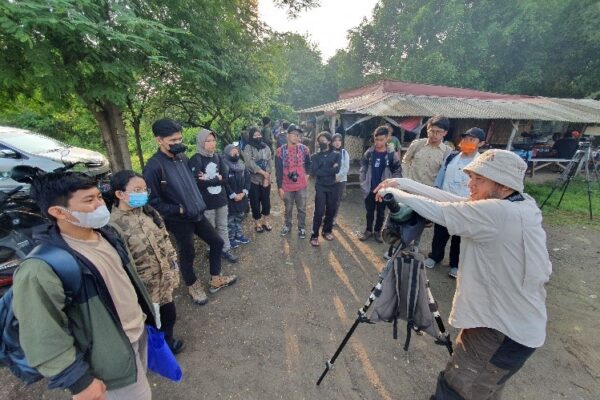-
Skilled Stakeholder Meets Technology: The Next Step of Migratory Waterbirds Conservation in Indonesia
EAAFP Small Grant Fund Project by Ragil Rihadini Yayasan Ekologi Satwa Alam Liar Indonesia (EKSAI Foundation) Indonesia, is one of the important wintering habitats for migratory waterbirds. With a total of 19.181 km shoreline (KKP, 2019), the information about migratory waterbirds in Indonesia is still little. Most records and information cantered in Java and Sumatra Island, this caused threats on the unknown potential sites (fig.01). Fig.01. Shorebirds Data (in red) from 2016-2022; source: burungnesia app. Many migratory waterbirds' important sites in Indonesia are not protected yet, some other are predicted as important sites but it needs more data and information to confirm that. Unfortunately, some of those areas do not have any birdwatchers who skilled in shorebirds identification. Meanwhile, threats such as hunting, habitat change, and other human disturbance frequently recorded in Indonesia; as the local people rarely understand the importance of conserving the waterbirds. As from our survey before proposing this project to the EAAFP, more than 60% of local birdwatchers are not familiar with waterbirds, and more than 70% are not familiar with migration and shorebirds. This makes us hard to access information about migratory shorebirds in Indonesia, and several times during our survey on new sites, we will find people hunting for waterbirds, simply because they did not know what is that, and how important it is to conserve the birds. The need for skilled birdwatchers as conservation agents: citizen scientists, bird researchers, college students, and government agencies to do regular and systematic surveys on the nearest potential habitat of migratory waterbirds. Fig.02. Field Training of Local Stakeholders in Indonesia Need of coordinated monitoring; cantered data (waterbirds database) that will help the scientists and management coordinator to determine the suitable action for shorebird conservation base on that data and information. With no coordinated monitoring and hunting assessment for migratory waterbird conservation, it will be hard to control threats and protect the birds (Eduardo et al, 2020). Fig.03 (a) the illustration of burungnesia.app (b) the data of Nordmann Greenshank in Indonesia from burungnesia app With support from the East Asia Australasia Flyway Partnership (EAAFP), we were able to combine conservation action and technology through a conservation training activity in Indonesia last November – December, 2022. The small grant from the EAAFP makes us able to reach and develop the shorebirds conservation skills and knowledge of at least 30 of local stakeholders from all around Indonesia (from Papua to Sumatra); covers the government agencies, national parks’ agents, college students, birdwatchers, and local NGOs representative. They got several materials about migratory waterbird conservation during the training: creating a community and research-based conservation program; shorebirds habitat management; shorebirds identification, etc. They also got access to discussing their on-field problems with experts during and after the training. In the process to creating a coordinated monitoring and shorebirds database in Indonesia, we collaborate with our partners in Burungnesia.app; an android application for submitting birds checklists. All the trained participants are mandatory to install and register in Burungnesia.app; they also train on how to submit and using this app. By combining the skilled stakeholders and this technology we hope the data, information, and study about migratory shorebirds in Indonesia will increase, also the conservation action and protection of shorebirds in Indonesia will become a serious attention. The project was funded through the 2022 EAAFP WG/TF Small Grant Fund. View the report, Click here.
Continue reading


